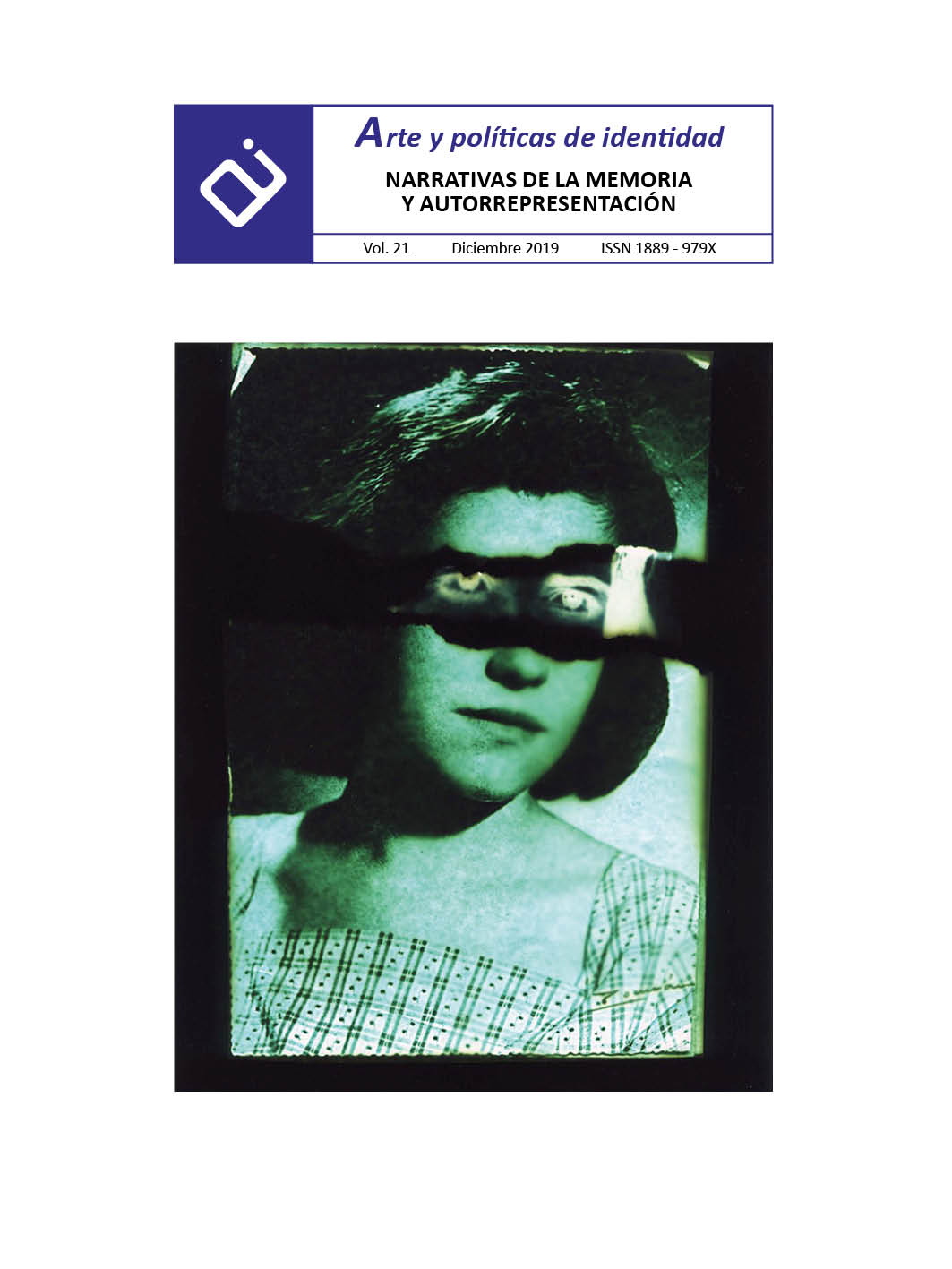Sensitive Material. A participatory photography project that showcases the experience of people who have suffered sexual abuse in childhood.
Abstract
Material sensible is a participatory photography project with people who have been sexually abused in their childhood and receive therapeutic support. The project is based on the Punt de Vista methodology, using photography as a tool for personal transformation and social inclusion, aimed at groups and people at risk of social vulnerability, which are not visible in predominant discourses. Through accompaniment and immersion in a creative process that uses intimacy as a reference, it connects image, memory, identity, everyday life and representation. Each participant recovers emotions and fragments of their personal history - often silenced - by reconstructing their own visual narrative. The project ends with a collective exhibition resulting from the creative process of each participant, which helps to strengthen the identity, generate new stories and raise awareness.
of an unspoken subject such as child sexual abuse.
Downloads
-
Abstract1725
-
PDF (Español (España))2088
References
Baita, S. y Moreno, P. (2015). Abuso sexual infantil: Cuestiones relevantes para su tratamiento en la justicia. Montevideo, Uruguay: UNICEF, CEJU, Fiscalía General de la Nación. Recuperado de http://www.bibliotecaunicef.uy/doc_num.php?explnum_id=141
Bernadet, V. (2016). La confianza educada. Madrid, España: TEDxTalks. Recuperado de https://youtu.be/Gqw0IQc1mRw/
Crisma, M., Bascelli E., Paci, D. y Romito, P. (2004). Adolescents who experienced sexual abuse: fears, needs and impedimeents to disclosure. Child Abuse & Negleet, 28, 1035-1048. Recuperado de https://www.sciencedirect.com/science/article/abs/pii/S0145213404002005
Echeburúa, E. y Guerricaechevarría, C. (2000). Abuso sexual en la infancia: víctimas y agresores. Madrid, España: Ariel.
Farré, N. (7 de noviembre de 2019). Disparar contra la culpa, el miedo y la vergüenza. El Periódico de Catalunya. Recuperado de https://www.elperiodico.com/es/barcelona/20191107/material-sensible-disparar-contra-la-culpa-el-miedo-y-la-verguenza-7717199
Furrer, M. (2014). My piece of sky. Johannesburgo, Sudáfrica: Mariella Furrer.
Güell, N. (2015,16). La feria de las flores. Medellín, Colombia: s/n. Recuperado de http://www.nuriaguell.net/projects/41.html
Kempe, H., Silverman, F., Steele, B., Droegemueller, W. y Silver, H. (1962). The Battered Child Syndrome. Jounal of the American Medical Association, 181, 17-24. Recuperado de https://jamanetwork.com/journals/jama/article-abstract/327895/
López, F. (1996). Abusos sexuales a menores. Lo que recuerdan de mayores. Madrid, España: Ministerio de Trabajo y Asuntos Sociales.
Maillard, C. (2014). La baba del caracol. Madrid, España: Vaso Roto Cardinales.
Matarrasso, F. (2019). A restless Art. London, United Kingdom: Calouste Gulbenkian Foundation.
NCTSN (2009). Folleto informativo sobre el abuso sexual infantil: Para padres, maestros y demás cuidadores. Los Ángeles, EUA. The National Child Traumatic Stress Network. Recuperado de https://www.nctsn.org/resources/folleto-informativo-sobre-el-abuso-sexual-infantil-para-padres-maestros-y-demas-cuidadores/
Niemeyer, S. (2018). Für mich. Cologne, Alemania: Ceiba Editions en colaboración con The PhotoBook Museum.
Parramón, R. (2019). Estéticas de la colaboración. Intermediaciones entre lo colectivo, lo participativo y lo colaborativo en las prácticas artísticas sistémicas. En D’anada i tornada. Projectes i pràctiques col·laboratives des del museu a través de l’art. (pp. 114-122). Palma de Mallorca, España: Fundació Es Baluard.
Pereda, N. y Forns, M. (2007). Prevalencia y características del abuso sexual infantil en estudiantes universitarios españoles. Child Abuse & Negleet, 31, 417-426. Recuperado de https://www.slideshare.net/elmundodelosasi/prevalencia-y-caractersticas-del-abuso-sexual-infantil-en-estudiantes-universitarios-espaoles-pereda-forns-2007
Rhodes, J. (2015). Instrumental. Barcelona, España: Blackie Books.
Royo, R (2016). Sufrir A.S.I. Temas de psicoanálisis. Sociedad Española de Psicoanálisis (12). Recuperado de http://www.temasdepsicoanalisis.org/2016/07/30/sufrir-a-s-i/
Solés, G. (2016). Esther Mbabazi dispara al dolor del abuso. El País. Recuperado de https://elpais.com/elpais/2016/10/31/planeta_futuro/1477933147_169961.html
Sucari, J. (2017). El documental social participativo: el protagonista como sujeto de la historia. Obra Digital, (12), 69-85. Recuperado de https://doi.org/10.25029/od.2017.112.12
Tardieu, A. (1878). Étude Médico-Légale sur les Attentats aux Moeurs. París, Francia: Librairie J.-B.-Bailliere et fils. Recuperado de https://gallica.bnf.fr/ark:/12148/bpt6k9785629t.texteImage
Torres, M. (2018). Abuso sexual infantil (ASI). Re, revista de pensamiento y opinión. Recuperado de https://www.revistare.com/2018/l1/abuso-sexual-infantil-asi/
Weiser, J. (1945). PhotoTherapy Techniques: Exploring the Secrets of Personal Snapshots and Family Albums. Vancouver, Canada: Photo Therapy Center Publishers.
Weiser, J. (1993). Therapeutic Photography. Vancouver, Canada: s/n. Recuperado de https://phototherapy-centre.com/therapeutic-photography/
Works published in this journal are subject to the following terms:
- The Service of Publications from the University of Murcia (publishing house) keeps the published works’ copyrights, and favors and allows the reuse of these works under the license indicated in point 2.
- Works are published in the journal’s online edition under the license Creative Commons Reconocimiento-NoComercial-SinObraDerivada 3.0 España(texto legal). They can be copied, used, disseminated, transmitted and publicly exhibited, as long as: i) the author and original source of publication are cited (journal, publishing house and work’s URL); ii) they are not used for commercial purposes; iii) the existence and specifications of this license are mentioned.
3. Conditions for auto-file. It is allowed and encouraged that authors share electronically their pre-print version (the pre-reviewed version) and /or post-print version (the reviewed and accepted version) of their Works before the publication, since it promotes its circulation and dissemination. RoMEO color: green.










